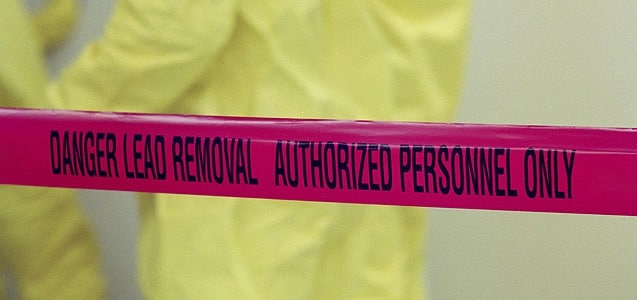
LEAD PAINT: The Public Health Hazard Disproportionately Harming America’s Inner Cities
It is estimated that over 500,000 children in the US between the ages of 1 and 5 years old faced the severe medical dangers associated with lead poisoning. While this number is certainly troubling, it becomes much more disturbing when coupled with the fact that researchers currently estimate that roughly 30 million American homes still contain lead-based paint.
Homes Built Before 1978 Are at Highest Risk for Lead Paint
Homes built prior to the 1978 federal ban on lead in consumer products are the highest risk of containing toxic levels of the chemical, and a disproportionate amount of homes such as these are concentrated in America’s inner cities.
One 1999 study found that the city of Baltimore is home to the highest proportion of lead poisoning rates among children in the United States. Previous studies have gone even deeper into the link between lead poisoning and America’s inner city neighborhoods. One 1980 National Health and Nutrition Survey even found that African-American children were 6 times more likely than their white counterparts to have dangerously elevated levels of lead in their bloodstreams.
Low Income Neighborhoods More Instances of Lead Paint Exposure
A major part of this discrepancy is due to the fact that houses in traditionally economically depressed neighborhoods are far less likely to be renovated and brought up to the codes of public health standards. This civic neglect on the part of elected officials, real-estate developers, property owners and public health representatives has put entire neighborhoods and populations at risk.
For residents of these communities, it is imperative to know what warning signs to look for and what steps can be taken to prevent children from being exposed to this toxic chemical.
What to Look for
If you notice a large concentration of paint chips along walls, windowsills or doorways, it could be a sign that lead-based paint was used in your home. In addition, it is important to know how to spot the early symptoms of elevated levels of lead in a child’s bloodstream. These can include:
- Decreased IQ, attention span and/or hand-eye coordination
- Short term memory loss
- Impaired hearing
- Decreased or stunted growth
- Hyperactivity, ADD, ADHD
- Increased aggressive and/or antisocial behaviors
- Decrease in muscle mass or severe, chronic muscle pain
Public Health policy is heavily influenced by many political factors, and it is unlikely that any progress on a given issue will be made without significant pressure from politicians, civic interest groups or the threat of public unrest. With this in mind, understanding the history of lead paint and the health risks it poses to urban communities throughout the country will be crucial in ensuring that no more children and families must undergo the hardship of suffering through lead poisoning.
Education is Key
Educating communities about prevention and treatment options for lead exposure can help undo the damage done by years of being pushed to the side and ignored. Furthermore, the greater the public knowledge about this health hazard, the more can be done on the part of citizens and community leaders to lobby effectively and demand actionable results from their elected leaders.
Baltimore residents should consult their medical professional as well as the Center for Disease Control’s Lead Prevention Program for advice about lead paint and steps to take.
If you feel you or your child has been exposed to unsafe levels of lead due to negligence or poor building upkeep, contact The Yost Legal Group at 1-800-YOST-LAW (1-800-967-8529).
The Yost Legal Group offers experience in aggressive litigation of lead paint poisoning claims and has successfully protected the rights of many in Baltimore and surrounding cities of families exposed to this serious health risk. If you feel you are at risk, don’t hesitate to act and call today for a free consultation.